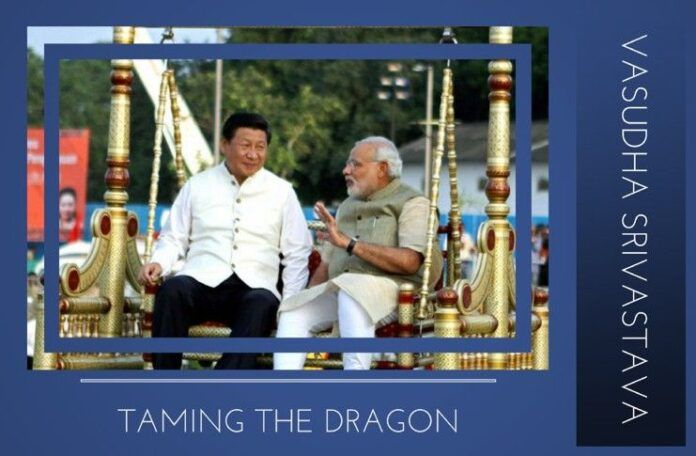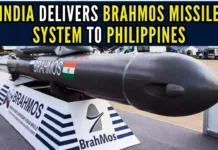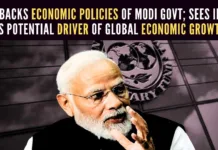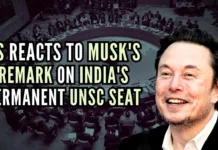
The ‘Hindi-Chini bhai bhai’ jingle has more often than not suffered indifference and back stabbing at the hands of the Chinese. Xi Jinping’s swimwear had not even completely dried after his Goa visit in October ’16, when once again he started to exert hegemony on India. In the ensuing nine months, the Chinese Dragon tried every possible means to burn down India. They blocked the US move to designate Masood Azhar as a global terrorist at the UN for the third time and later also blocked India’s permanent membership to the elite NSG for the Nth time. Things turned ugly when they bulldozed an Indian bunker at the Tri-Junction in Chumbi Valley, where the Chinese troops were trying to build a road in the Doklam plateau. Quid-pro-quo ensued with Mansarovar Yatris and cyber bullying on Twitter with reminders of 1962. But this wasn’t the first time when Xi had defrauded Indians of their hospitality. Even back in 2014, when Modi was serving him the Gujarati Thali on the banks Sabarmati River, Chinese troops had intruded into Ladakh.
Some interesting political conspiracy also seems to be hatching behind the scenes, as Rahul Gandhi first denied and then in a complete turnaround endorsed his meeting with the Chinese envoy.
This lifetime animosity is fuelled by generations of mistrust, the bitterness of 1962, miscalculations by Congress regime over the years, Tibet, border disputes and many other intangibles. But things did change a bit in the last three decades when both started perusing mutually beneficial economic goals.
Today China and India account for nearly 37% of the world’s population and are emerging giants wanting to reshape the world order. Economic forecasts predict a steady growth for both and it is estimated that by 2030 they will have a combined share of 40% of world’s GDP, of course with balance in favor of China. The key to this success story lies in the hydrocarbon and mineral rich Central Asia where both the Nations are trying to assert their diplomacy and dominance by unconventional means.
While India is meddling its way using soft power and Modi’s Jaadu ki Jhappi, China is enacting the big theatrical drama of OROB (One Road One Belt). They want to kill two birds with a stone – Geographic encirclement of India; and mitigation of the vulnerabilities of “Malacca Dilemma”.
The trade deficit for India stands at a staggering $51 Billion US Dollars and the Chinese investments in India has grown to about 27 Billion US Dollars.
If China aims to be a superpower then it must confine India to South Asia through a geostrategic encirclement. China’s efforts to downsize India started years ago with the String of Pearls theory in the Indian Ocean Region, and now it is in its final stages with the construction of the China-Pak Economic Corridor (CPEC), the expensive resuscitation of the ancient Chinese Silk Route from Asia to Europe through the Middle East. The corridor runs through the PoK and is nightmarish for the Indian claims in Baltistan, and Pakistan would not leave a stone unturned to needle India. Once completed, CPEC will expand China’s strategic footprints in the Indian Ocean Region and would change the regional power matrix forever.
The encirclement was not only geographic, but a systemic economic strangulation is also more or less complete. The trade deficit for India stands at a staggering $51 Billion US Dollars and the Chinese investments in India has grown to about 27 Billion US Dollars. ‘Made in China’ surrogacy runs deep into the Indian capital goods and electronic market. Even the basic household products, a spoon on the dining table to the Ganpati in Mandir, are hostage to their intentions. As of today, the macro view is very scary where it appears that the Dragon has overwhelmed the great white Indian elephant.
It is not that the worst was over here. Some interesting political conspiracy also seems to be hatching behind the scenes, as Rahul Gandhi first denied and then in a complete turnaround endorsed his meeting with the Chinese envoy. Although his intentions are a mystery to him, yet one won’t be surprised if this had something to do with the 2019 elections in sight. The opposition is already up in arms and waiting to surround the Government during the upcoming monsoon session of the Parliament.
Some people have already started boycotting the Chinese products in India and it should be exploited to turn into a National mission.
It is not clear how Government and Modi plan to tackle this Chinese supremacy; and certainly, it cannot be equalized in days, if not decades. Time and again strategists have come up with workable plans, but because of inconsistencies in our intent, policies, and stance, none have worked to satisfaction. Having seen the failures of the long term strategic plans, it may not be a bad idea to go for small targets – Aim small, Miss small. This offers flexibility for a mid-course correction and rechanneling of the effort and resources in the right direction.
The first and foremost step should be an effort by Modi to subside the anxiety at home. He must address the Parliament and clarify the Government’s stance in relation to Chinese incursions. India should adopt a dissuasive defensive posture at Doklam and not get emotionally swayed by the Chinese provocation and Opposition’s hoodlumism. Rahul Gandhi must be confronted to explain why he overstepped his boots and mandate by meeting the Chinese envoy.
Some people have already started boycotting the Chinese products in India and it should be exploited to turn into a National mission. But Government cannot openly endorse this movement because of diplomatic reasons and trade agreement between the two countries. However, they can start taxing the Chinese capital goods and FMCG heavily to discourage their procurement. SEBI should also review the businesses of the Chinese foreign investors in the equity and securities market. If they can jail Subroto Roy, certainly they can restrict Chinese on some pretext or the other.
Next Modi must spend his air miles to mend the broken ties with Nepal and Maldives. Historically both these countries were India’s allies, but an overt Chinese influence has turned them into foes. The government should finalize short term gratis objectives with these countries at the regional level to regain the lost confidence and break this encirclement. With the same spirit, India must also aggressively engage with Vietnam, Sri Lanka, Myanmar, Mauritius, and Iran.
India should aim for cooperation with China in the region and it must emphasize a peaceful coexistence.
India–Myanmar–Thailand (IMT) tri-lateral highway which is under construction should be made operational as soon as possible, preferably before the elections in 2019. Plans for its extension up to Cambodia, Laos, and Vietnam are already existing and it should commence at the earliest.
The symbiotic webbing of the Indo-China economies promises a bright future for both of them and both Nations require each other for a prosperous way ahead. This is the message which Modi has to carry with him to China for the next BRICS summit in September ’17, and hope that the Jaadu Ki Jhappi works this time.
India should aim for cooperation with China in the region and it must emphasize a peaceful coexistence. The present slumber in the China’s economic growth should be taken as a bright opportunity to unlock the geographic and economic encirclement. Concerted efforts must be made to diplomatically end the border dispute as a win-win for both the countries. The sino-pak alliance is not likely to change in near future but can be softened if India awakens China to Pakistan’s radical Islamic terror agendas. Both China and Pakistan are thick as thieves when it comes to waging an asymmetric war on India and with the heightened Sino-India friction at Doklam, the combined China-Pakistan threat is graver than ever before. The order of the day demands pragmatic, stable and quiet relations with China, albeit with the cunningness of a fox.
- हिन्दू धर्म – एक तबाह अन्तः मन और उसके जीने का संघर्ष - August 17, 2017
- Kashmir – Diagnosis and Cure - August 16, 2017
- Hinduism – A Ravaged Soul and the Quest for Survival - August 13, 2017











Tensions are flying high.. need to be strong and boycott Chini saman
Taming d dragon will require a lot more cunning ways than d haloness of jaddu ki jhaapi and soft power.. more than subtle diplomacy it needs stringent actions..
It is time now to display our PATRIOTISM with full vigor and enthusiasm.
A strict NO anything Chinese (even if offered free) will bring these scoundrels to their knees.
BE INDIAN.BOYCOTT CHINESE. ESTIMATE A 30% INCREASE IN YOUR PERSONAL BUDGET.